Taking the example of using rich snippets for hotels
In my experience, many local businesses miss out on the opportunity of SEO since they don't focus their efforts in the use and implementation of structured data.
Rich snippets on SERPs attract the attention of users and this means that the CTR is improved than the ones of your competitors.
In this guide I will take the example of Hotels to show how structured data can be used. Let's take an example. Here are 2 cases, decide which one would grab your attention.
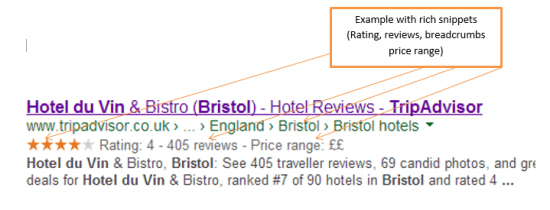

We should note, that at least for now, the appearance of rich snippets on SERPs does not have an impact on rankings according to Google. However, what Google prohibits now, it may allow in the near future. Thus, it is better for us to be proactive and implement these data on our source code as the benefit includes:
- Improved clickthrough rate, since the use of rich snippets will grab the attention of users.
- In the long-run, if Google considers rich snippets as one their 200 ranking factors, we may gain a more prominent position on search engine rankings.
To implement rich snippets in this case, we have 2 options; we can either use the Data Highlighter which is a more simplified version of the Structured Data Mark-up Helper since Google does everything for us. However if we decide to use the Structured Data Mark-up Helper we will probably need a developer’s assistance, depending on our coding skills.
Implementation of rich snippets using the Structured Data Mark-up Helper
Let’s assume that we want to see these appealing rich snippets on SERPs. As an example we are using Hotel Du Vin in Bristol. The first thing we need to do is to insert the respective URL in the tab and choose the type of radio button that best matches to the type of our business, as we see on the screenshot below.
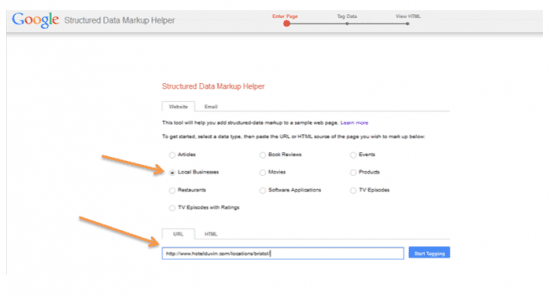
The next step is all about populating with data our column B from the information that we find on column A.
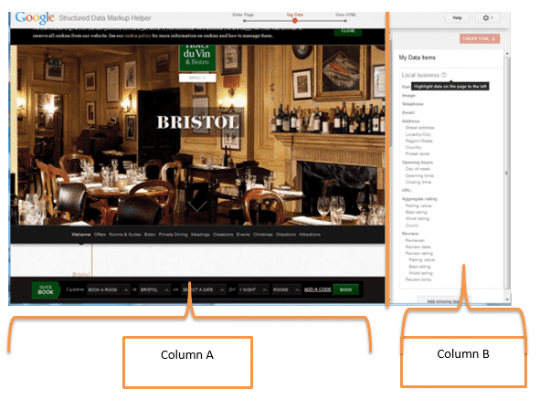
So, let’s start populating with (indicative) data our fields:
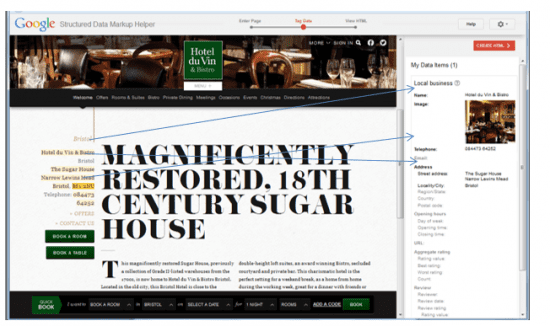
If we had information the Aggregate Rating within the page, then we would be able to populate the respective field. Similarly, if we had reviews within the page, like on Trip Advisor then we could add data in the respective field also
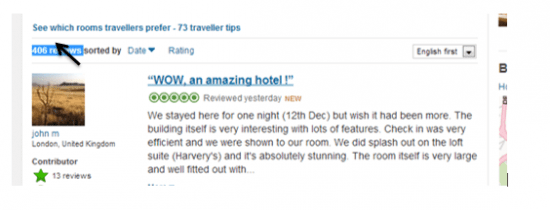
So, in order to include information like Aggregate Rating or Reviews in our page, all we need to do is to go to Schema.org in Aggregate Rating and include the respective mark-up in our source code.
This on-page mark-up (using the schema.org) ‘enables search engines to understand the information on web pages and provide richer search results in order to make it easier for users to find relevant information on the we’.
For the third step we need to generate the mark-up HTML based on the applied tags.
The microdata mark-up are added by Google through the use of the Structured Data Mark-Up Helper.
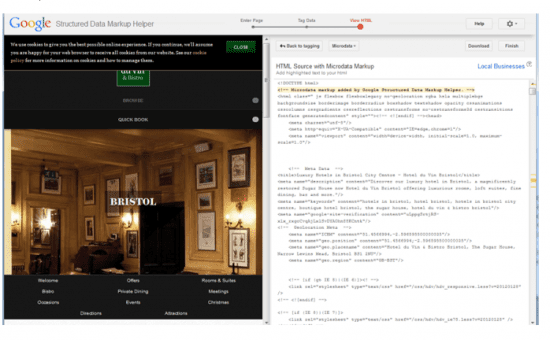
We can now find the information that we added earlier in the form of microdata mark-up, as we see in the screenshot below.
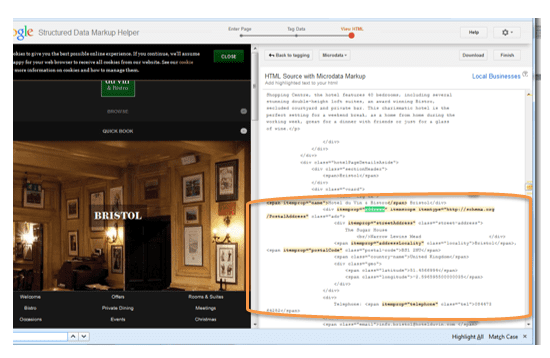
Now we can download the generated mark-up and dispatch it to our development team. Alternatively we can implement these changes, depending our coding skills.
We need to point out the fact that apart from Microdata we can use JSON-LD. The structured data that are going to come up using JSON-LD will bring the same results like microdata, which is the generation of rich snippets.
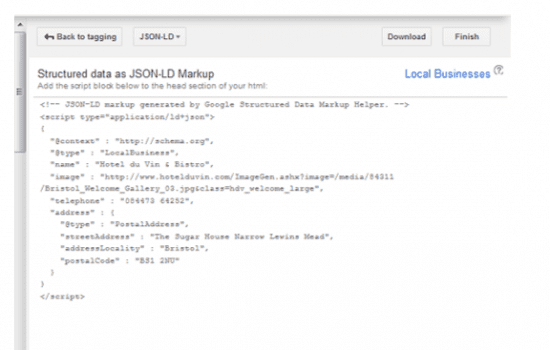
According to JSON for Linked Data: ‘ Linked Data empowers people that publish and use information on the Web. It is a way to create a network of standards-based, machine-readable data across Web sites. It allows an application to start at one piece of Linked Data, and follow embedded links to other pieces of Linked Data that are hosted on different sites across the Web’'. In other words, similarly to microdata, now information become more meaningful from users to users and at the same time this information are machine-readable.
So, these are the steps to complete the process of generating rich snippets.
We need to take into consideration that we will not see immediately these rich snippets on search engine results but it might take some time after they are reviewed by Google.
For instance any mistakes in the code might delay the process. For more information on the factors that might delay the acceptance of our rich snippets we can refer to Google Webmaster Central.















